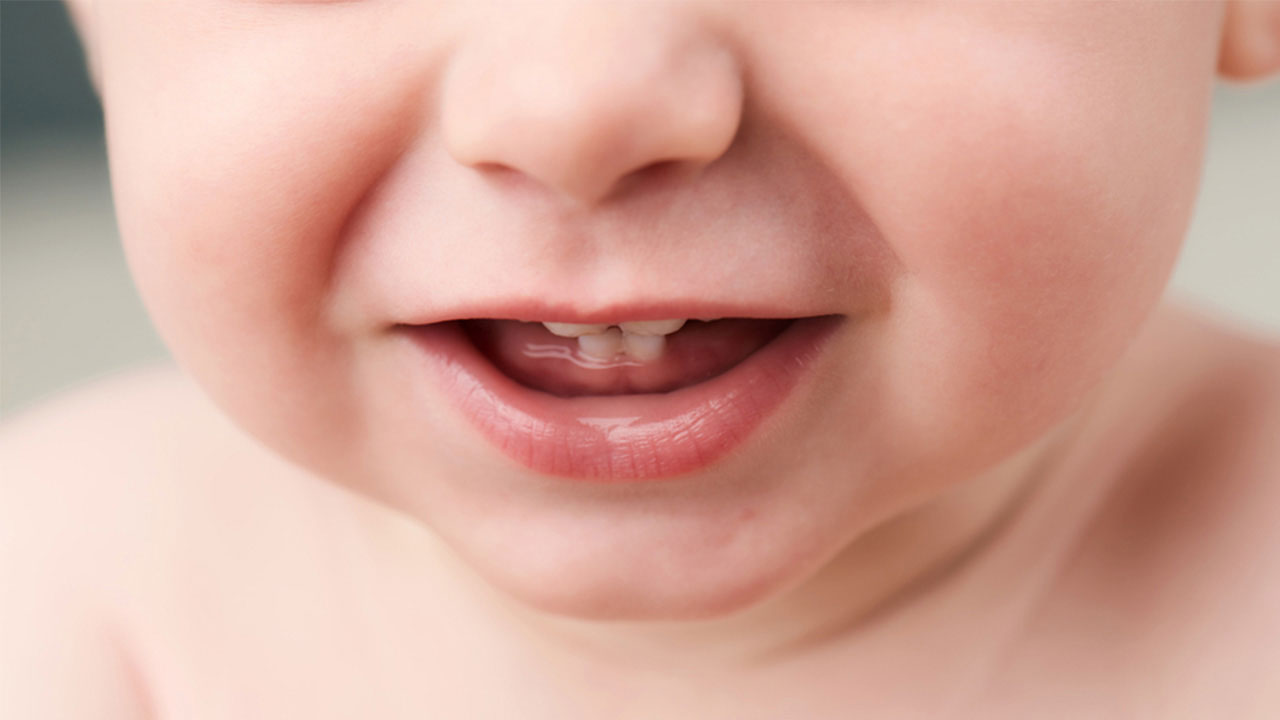Teething Solutions: Symptoms and Remedies
 By: by Amino Science
By: by Amino Science

Some babies seem to experience little distress during teething, while others suffer a great deal of pain. Fortunately, parents can take steps to alleviate discomfort with these teething solutions and get their little ones on the path to recovery.
Although they start to develop while the baby is still in the womb, new teeth don’t break through until months after the birth. Typically, the bottom middle teeth appear first, followed by the top middle teeth and the teeth along the sides and back of the mouth. While girls often go through the teething process before boys, there’s no single teething schedule that babies adhere to.
When Do Babies Teeth?
Baby teething varies from one child to the next, but most start getting teeth between 4 and 6 months of age. In rare cases, babies might not begin teething until around 18 months. If your baby doesn’t have at least one tooth by this time, it’s a good idea to contact your dentist.
Teething tends to be genetic, so parents whose teeth erupted later will probably have children who follow the same pattern. In general, most children have a full set of primary, or baby, teeth by 3 years old.
Teething Symptoms
Regardless of how old a child is when teething begins, the process can cause a great deal of discomfort. Some of the most common teething symptoms and signs include:
- Drooling or increased saliva
- Swollen or bulging gums
- Fussiness, crying, or irritability
- Sleeping issues
- Biting, chewing, or sucking on objects
- Refusing to eat
- Touching the face or ears
It’s important to note that symptoms like fever, runny nose, and diarrhea are not normally associated with teething. According to the American Academy of Pediatrics, teething babies often put objects in their mouths in order to soothe the gums. As a result, they have a greater chance of contracting germs or viruses during this period.
If your baby experiences these symptoms for 24 hours or more, don’t hesitate to contact your doctor. In general, experts recommend seeking treatment if a child has a rectal temperature of 101 ºF or higher or is suffering lethargy, vomiting, or loss of appetite.

Teething Remedies
From modern medical remedies to home treatments, multiple options exist to help soothe teething pain as your baby's teeth come in. Here are some of the most effective teething solutions.
Ice
Commonly used to treat pain and swelling, ice can be a great way to soothe baby's gums and alleviate pain. While some parents opt to let babies chew on frozen fruit wrapped in a cold washcloth, others use refrigerated pacifiers or other teething toys. Remember not to store teethers such as teething rings in the freezer, as the hardness can be damaging to a baby’s sensitive gums. If your baby seems particularly distressed, consider soaking a cloth in breast milk or chamomile tea before putting it in the fridge to cool.
Additionally, babies may be tempted by chilled fruits and veggies or teething biscuits, which can be stored in the fridge for extra effectiveness. Crush them up into a mesh feeder to avoid any choking hazards.
Gentle Pressure
While some babies are comforted by cold, others prefer the feeling of pressure on sore gums. Experts believe the sensation distracts them from the pain of teeth erupting. Wooden and silicone teethers are great for keeping babies occupied while easing their discomfort. And, of course, there's the popular Sophie the Giraffe made of rubber and a favorite among parents and babies alike. Many babies also enjoy the feel of a gentle gum massage. Just make sure to wash your hands thoroughly before letting baby gnaw on a clean finger or two.
For times when you need your hands for yourself, consider one of the many teething jewelry products on the market. In recent years, raw Baltic amber necklaces have gained special popularity. According to some sources, the succinic acid in an amber teething necklace has analgesic properties that soothe baby’s discomfort.
Numbing Gels
If natural remedies like massage aren’t alleviating your baby’s distress, you might want to consider an over-the-counter teething gel to help numb the gums. Check with your doctor before selecting a product. According to the U.S. Food and Drug Administration (FDA), topical creams and teething tablets with benzocaine, including Anbesol Baby and Baby Orajel, shouldn’t be used on children under the age of 2 without medical approval.
If your munchkin is older than 2, you can numb the gums with natural clove essential oil, which research shows works as well as benzocaine. Just dilute 1 drop of clove oil with 1 tablespoon of a carrier oil such as coconut or olive oils.
OTC Pain Relievers
If all else fails, you might want to consider pain relief medications like acetaminophen or ibuprofen, which can also help reduce inflammation. Check with your doctor to determine the appropriate dosage for your baby.
Because drooling is common in teething babies, it’s a good idea to pat the mouth and chin areas dry using a soft cloth. Doing this helps prevent your baby from developing an uncomfortable rash.
Dealing with teething pain can be a stressful experience for parents (be sure to take care of your own health with essential amino acid support). However, with a little time, and a lot of trial and error, you and your baby can enjoy teething relief.

Up to 25% off Amino
Shop NowTAGS: conditions
Join the Community
Comments (0)
Most Craveable Recipes




 833-264-6620
833-264-6620



















